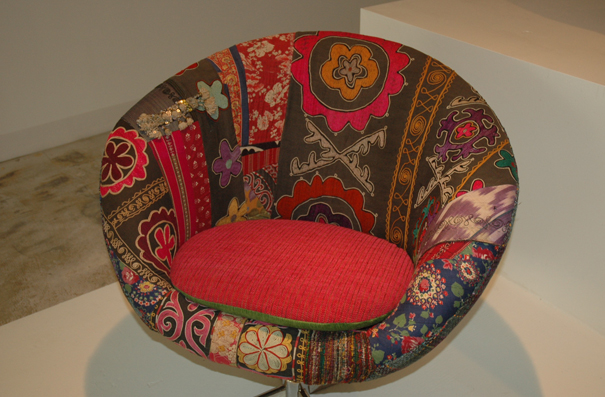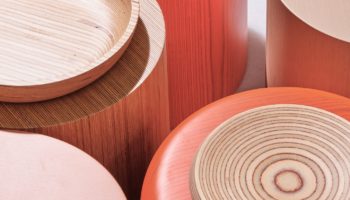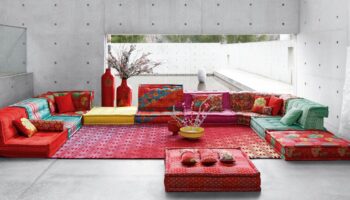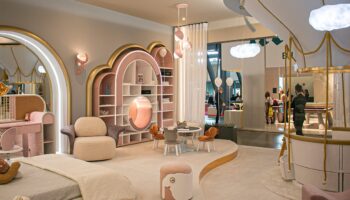Live at Design Miami: Al Sabah Art and Design
Mention “interior design” in the same breath as “Middle East,” and one name emerges before all others. Familiar to 3ringers as the force behind such gems as the Koochy Sofa and the Blobulous Chair, Rashid is known the world over for his work in product design and architecture. Rashid’s oeuvre is so expansive that the design world might run the risk of neglecting the other manifold talents blossoming on the far side of the world. Leave it to Miami and Kuwait’s Sheikh Majed al-Sabah to right that wrong…
Bokja. Designed by Hoda Baroudi and Maria Hibri. Exhibited bia Al Sabah.
Affectionately (and alliteratively) dubbed the “Sheikh of Chic,” Al-Sabah has always defied expectations (not least, those of his Royal Kuwaiti family). Stemming from an early “passion for fashion,”-notably manifest in a frustrating inability to locate designer Japanese jeans in the Kuwait of his youth, in 2002 Al-Sabah founded “Villa Moda,” a fashion emporium and retail treasure chest in the unusual form of the “giant glass box” created by Italian architect Pierfrancesco Cravel. Surprising mavens of taste and style the world over, Villa Moda was pronounced “a concept that rivaled anything that could be found in the fashion capitals and which had been created for a wealthy, cosmopolitan and opinionated audience.” No wonder Al Sabah moved on to design. Certain in his conviction that globalization, a young population, and a growing middle class render the region a potent player in fashion, art, and design, Al Sabah is bringing a Middle-Eastern aesthetic to the West and vice-versa, often in one and the same piece.



An early stop in this globe-trotting endeavor is, of course, Design Miami, where Al-Sabah and Lebanese designers Hoda Baroudi and Maria Hibri present “ALEF,” a sneak peak at the contents of Al-Sabah’s new Dubai-based art and design gallery (opening in March, 2009). Baroudi and Hibri are a great choice for a preview. Their collection of Western-inspired vintage forms upholstered in the vibrant and vivacious fabrics of Tajikistan is a grand metaphor for a revived aesthetic. The work of Baroudi and Hibri, operating under the collective Aegis of “Bokja,” includes two “Swivel” pieces: “Swivel Talia”-a pillow-less loveseat/sofa with a unifying parabolic profile and an under-stated base; and “Swivel Chair”-possessed of the same gracefully arching half-moon shape as the sofa, but with the geometry adjusted to solo proportions. Both chair and sofa are covered in eye-popping embroidered fabrics, a wealth of shape and color to rival Shahryar’s anteroom, where Scheherazade spun her tales. Far from rejecting his roots, Al Sabah wants the exhibit to showcase the hospitality of the Orient, and to that end, the space will be outfitted as a luxury Souk, tempting visitors with the comforts and delicacies of Damascus or Cairo (including Cardamom-flavored coffee and roasted nuts)… As if anyone needed an incentive to witness Al Sabah’s ambitious ascent into art and design.




Leave a Reply